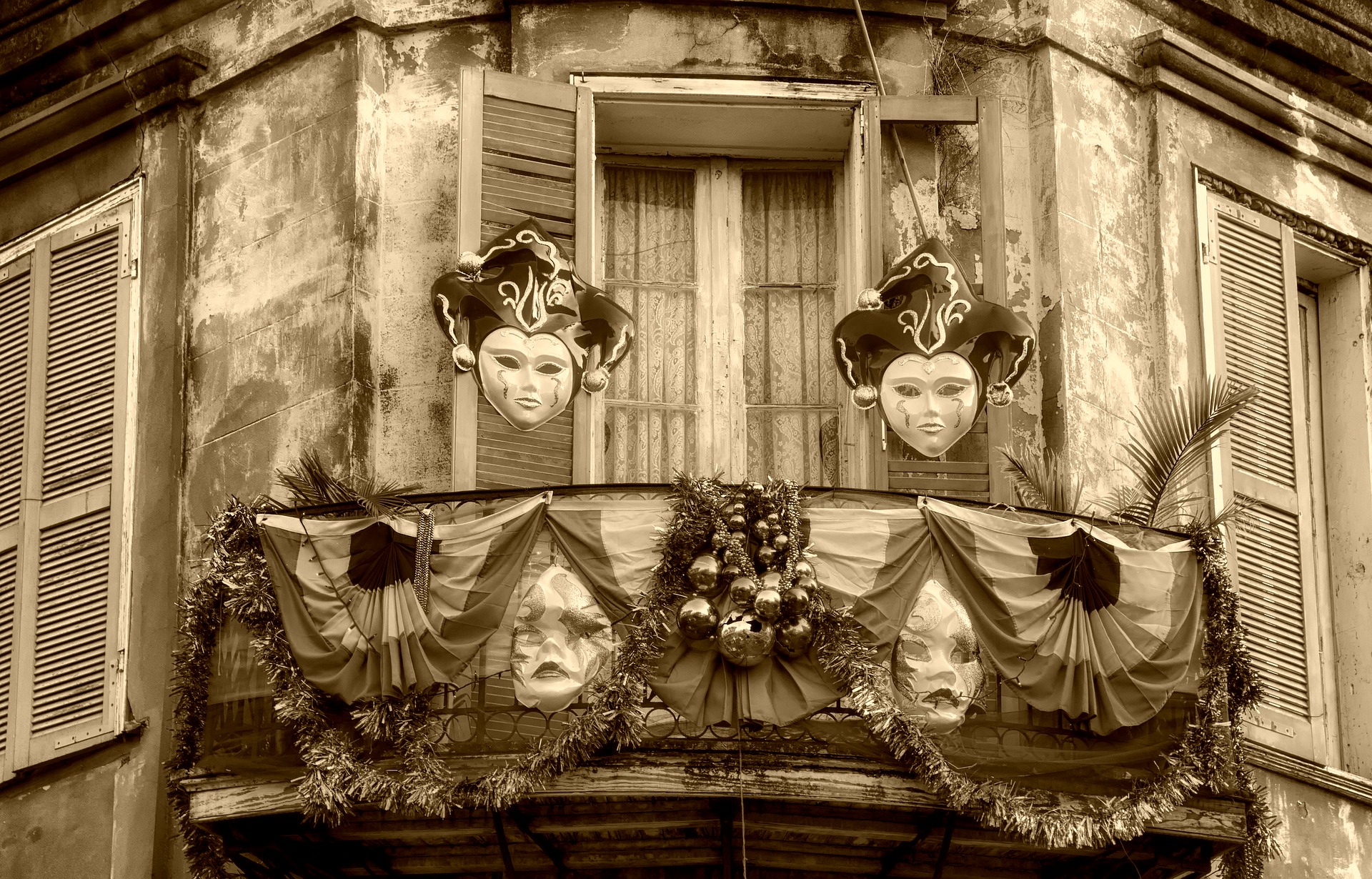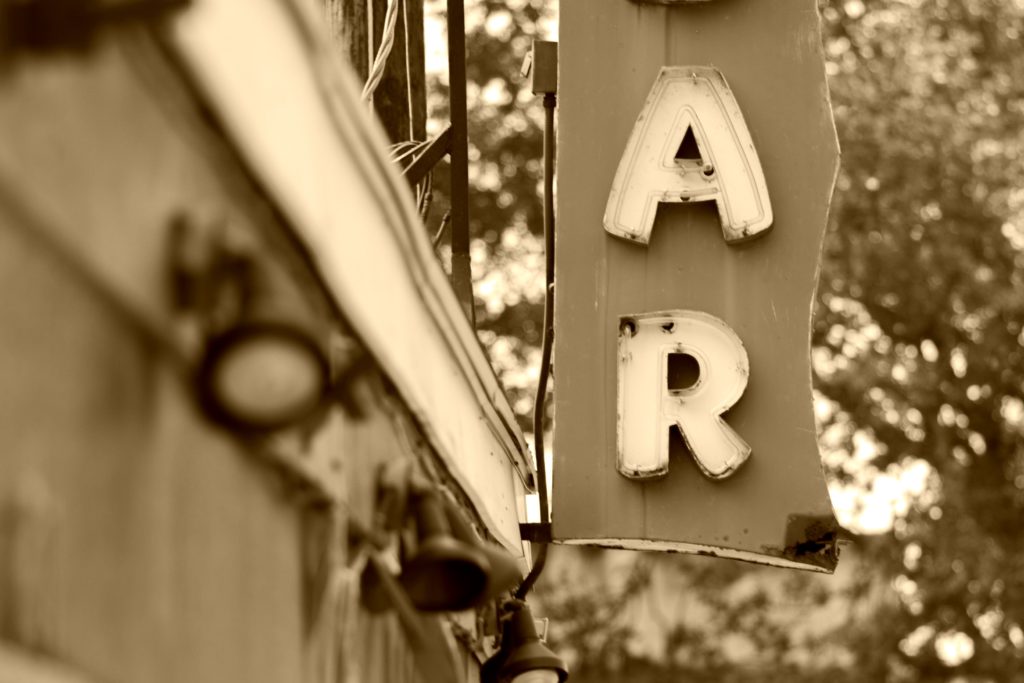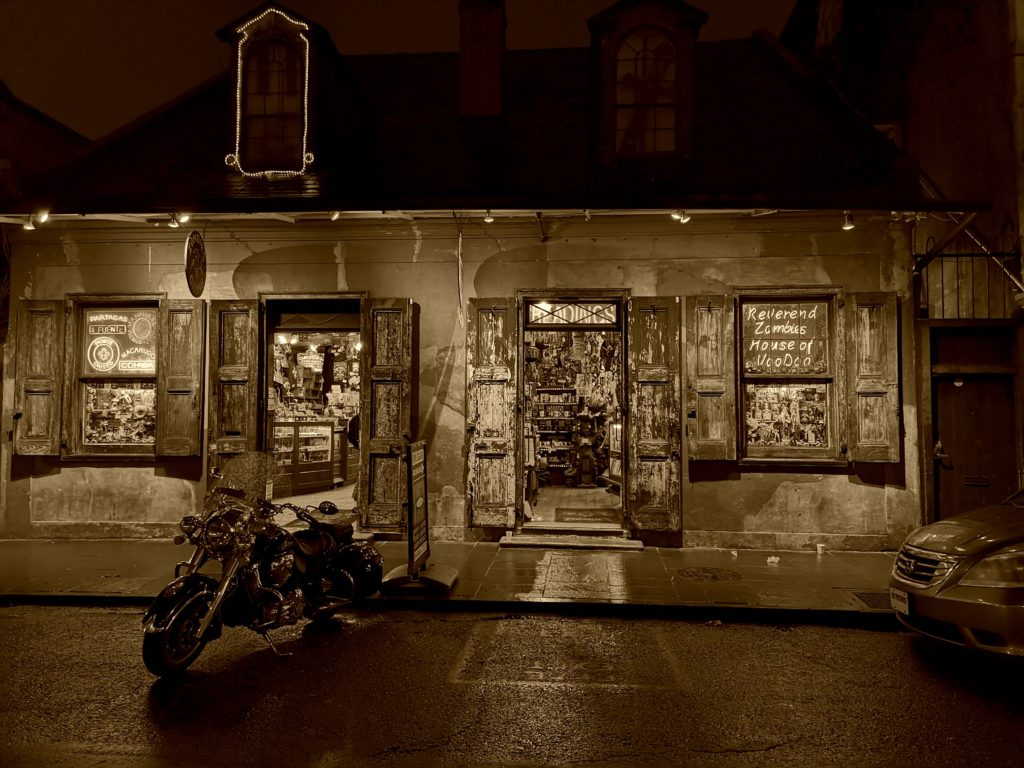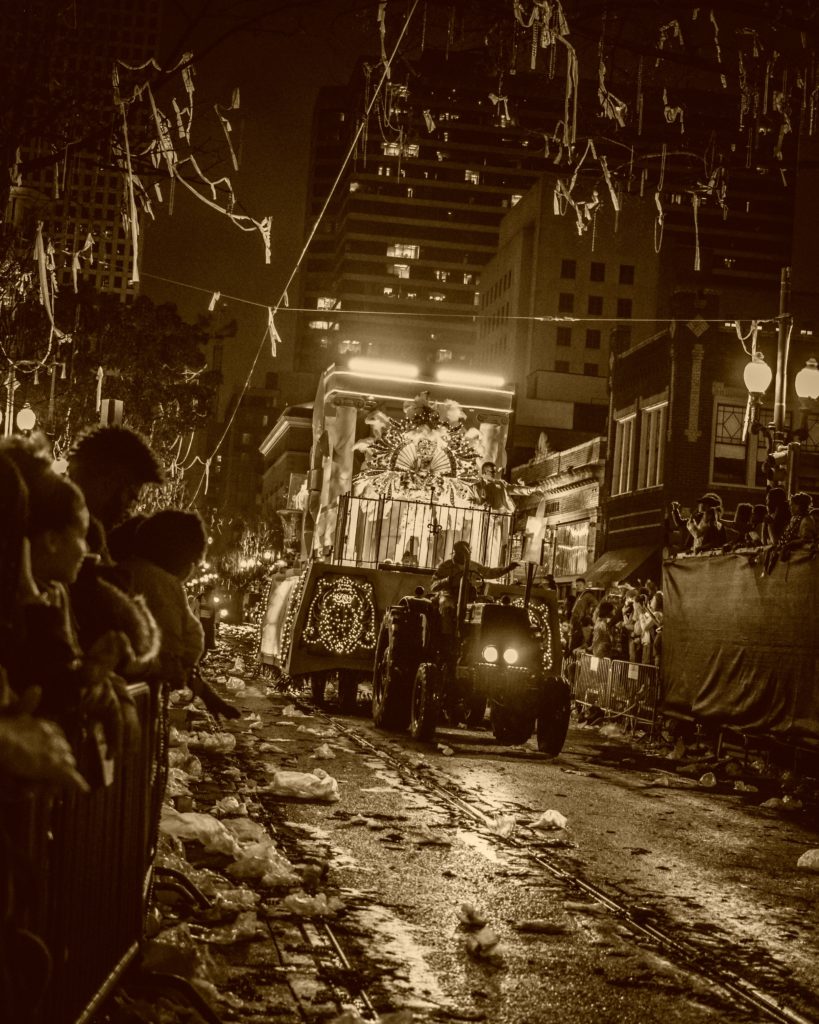
New Orleans hadn’t changed; it was the same city it had been before my breakdown. It was I who had changed, perhaps unalterably.
After 11 years in New York City, at the age of 46, I was ready for a change. So I decided to move to the city that had fascinated me since my childhood in rural Maine: New Orleans.
In New Orleans, I imagined as I packed up my small apartment, I would live in a place with lofty ceilings, shuttered windows, slowly spinning ceiling fans, and, that precious luxury in New York, a yard. Or a porch. Or a balcony. In any case, not a fire escape.
In New York, I worked long hours as a copy editor. In New Orleans, I envisioned life, like that ceiling fan, moving at a gentler, more rhythmic pace. Instead of getting by in a city that often treated strangers with indifference, disdain, or outright hostility, I would finally feel like I had found a place to call home, a place that greeted strangers with warmth. I would host parties with my roommate and partake of everything that made New Orleans New Orleans: live jazz in small clubs, costuming on Mardi Gras day, and eating grilled shrimp po’boys from the corner store, boiled crawfish in someone’s backyard, hot beignets when friends came to town, and creamy, buttery bowls of that Southern staple, grits.
It all came to pass: a fine apartment, parties, and the food. Except the grits. I had been living in New Orleans for a little over two years before I finally ate them, in a psychiatric facility in Broussard, Louisiana.
![]()
Of course, the move from New York was challenging, and it took a year before I felt settled in New Orleans. But when I did, I felt like I had finally arrived in a place to call home. I pitied people who had to make their homes elsewhere, in staid cities or relentlessly ambitious ones. Anyplace else seemed drab in comparison.
I loved the architecture—the Creole cottages, the shotgun houses, the Garden District mansions. I loved the graveyards with their sunbaked mausoleums that contained the bones of generations of families, and the lizards that scuttled across the marble and stones. I loved the music that defied time, drifting from houses in the morning, the midafternoon, the evening. I loved how saying “hello” or “morning” to someone you passed on the sidewalk and had never seen before was just a part of being part of the city’s flow. I loved the French Quarter apartment a new friend and I found. The wraparound balcony allowed us views of both Esplanade Avenue and Burgundy Street, and I would lift one of the floor-to-ceiling windows in my bedroom to access it. I loved the strands of Mardi Gras beads that dangled from people’s porches and fences and from the trees on St. Charles Avenue; I even loved the beads of broken necklaces that lay in the street when my bike tires crushed them; they gave a satisfying pop, one last burst of color.
And perhaps most of all, I loved who I was in New Orleans. As an adolescent, I’d been so afraid of people that whenever someone knocked on our front door, I’d hide, crouching low beneath a window or wedging myself behind the chimney. When I left home, that fear released its grip ever so slightly, but I still spent decades believing I shouldn’t occupy too much space or attract too much attention because I wasn’t worthy of it.
In New Orleans I felt free to expand. Although everything in New Orleans felt new to me, I knew I hadn’t discovered any of it. New Orleans had allowed me to discover myself. I finally felt like I belonged, especially on Mardi Gras when the celebration and the liberation from the everyday courses through people, linking them all.

My second Mardi Gras, when I’d been living in New Orleans for a year and a half, I came up with a theme for my costume: Death Takes a Holiday. I strolled with friends through the Marigny and the Bywater in a green lace bra and a multicolored sarong with thin black suede gloves, a small, tattered black silk umbrella, and a black veil as my accessories, and beach-ready flip-flops. Crossing back over the railroad tracks that run parallel to Press Street, I lay down for a photo after positioning my arms, legs, and umbrella carefully. I may have resembled a colorfully attired corpse, but I had never felt so triumphantly alive.
Early one morning when I was headed to my favorite coffee shop for my daily mocha before I began work, I passed two young women, both dressed in strapless black evening gowns with elbow-length black gloves and high heels. They were still giddy from whatever evening they were just returning home from. “How are we ever going to live anywhere else?” one woman asked the other, and I understood exactly what she meant.
![]()
Broussard is 140 miles southeast of New Orleans, roughly a two-hour drive. But in respects other than geographic, it’s much further away. Broussard is part of Cajun country, something that patients from the area—which was most of them—remarked on.
“I’m a coonass,” one of the patients said with a laugh as we stood around the nurses’ station waiting for a technician to unlock the room where we ate our meals and, during recreational therapy, colored worksheets or painted ornaments. She was a woman in her early sixties who applied her makeup at the nurses’ station every morning; her Michael Kors wardrobe had drawn several comments from the techs when they were unpacking her suitcase and cataloging its contents shortly after her arrival. The only other time I had heard “coonass” spoken with pride and affection was in a roadside bar in a random little town, where a patron had introduced herself to me and my road-tripping friends from New York.
When the other patients found out I was from New Orleans, their response was “How did you wind up here?” They weren’t asking how I had wound up in a psychiatric hospital—we were all there for a mental affliction or an addiction or in some cases both. They couldn’t understand what I was doing so far from the city.
I had trouble understanding it myself. I knew the immediate series of events that had brought me here: the four-month slide into deepening depression, as the antidepressant I’d been on for the past 21 years resisted any add-on medication my psychiatrist prescribed; the decision to commit myself; the snarled plans, and the trip to the hospital emergency room. But what I couldn’t quite fathom was how my sense of myself, solid and secure, had vanished so quickly. Just six months earlier, I’d been playing pool, badly but joyfully, and dancing with strangers to live blues music at a house party. Slowly but steadily, I was consumed by depression until there was nothing left except for an unrelenting sensation of helplessness and terror, and the total absence of joy or even simple pleasure.
Depression caused me to contract, to draw inward and retreat from the larger world, which seemed to have no place for me. But the island of my depression was no secure place either—it had shrunk rapidly, leaving me without firm ground to stand on. Instead, beneath my feet was . . . emptiness, a void that made living moment to moment excruciating. I would get into bed at 3:00 p.m., with the intention of taking a brief nap, but five, 10, 18 hours later, I was still in bed, terrified and trembling, unable to move.
Depression caused me to contract, to draw inward and retreat from the larger world. Click To TweetEven if I could get out of bed, what was the point? Life had been leached of all color and texture; it was just an unending stretch of bleak terrain that I would have to drag myself across until I died, whether naturally or by my own hand. The desperation required to commit suicide, that I had in excess; the energy, though, I was unable to muster.
A “good” day had become one in which I felt a brief lift, not so much a release from depression as a temporary cessation, the hint of freedom. And those good days felt fragile, like a moth’s wings coated with a powdery substance that could be disturbed by the slightest touch.
![]()
Thirty-six hours before I entered the psychiatric facility, I went to a corner store and picked up a grilled shrimp po’boy—dressed and on French bread, of course—for dinner, and a Klondike bar for dessert. I had made plans to commit myself, so this felt like a last meal, a few of my favorite foods, before I left my current life and went someplace unknown, someplace that scared me. And though I, unlike an inmate on death row, would return from the facility, I wouldn’t come back the same as I’d left. It was a death of sorts, so I fed myself well.
I had spent the day readying myself for a week as an in-patient at a local facility with one open bed: setting up my e-mail with an out-of-office reply, notifying a few friends, packing. (What does one wear on one’s first day in a psychiatric facility? I texted a friend. A fly-as-hell pinstripe suit and wingtips, he responded.)

I felt optimistic, almost cheerful, for the first time in months. With the decision to commit myself made, I experienced a surge in energy. Spending a week in a psychiatric facility would be similar to the three years I’d spent getting my MFA in creative writing—a different objective and environment, of course, but both were about commitment. Each was an immersion in something not necessarily taken seriously or acknowledged as essential in the larger world. Mental health, writing: both were challenging to focus on and make any headway on when work deadlines had to be met, laundry done, meals made, dishes washed, the trash taken out, the cat fed.
The next morning, though, the empty bed had been filled, and the events that followed felt torturously drawn out: My roommate and I went to an emergency room, where we waited seven hours before a facility with an open bed was found; it was another five hours before a vehicle arrived to take me to the facility, and two and a half hours more before we arrived at the facility.
By then, I was a shivering wreck, just able to shuffle from the backseat of the vehicle in the hospital-provided boxy blue paper top, equally shapeless paper pants, and bright-yellow socks with traction soles to the entrance, where a tech was waiting.
![]()
Forty-eight hours after my last-meal shrimp po’boy, I was served a plastic bowl of grits. Like most of the food at the facility—the grainy reconstituted eggs, the limp white bread, the dry, puck-shaped sausages, the chilled, juiceless tomato slices—the grits bore only the most tenuous resemblance to actual food. In color and texture, they were almost indistinguishable from the oatmeal that was also served.
The food was awful, visually and nutritionally devoid of any value. Lack of color might almost have been a requirement for a food to be served at the facility; everything scooped or spooned or ladled onto our trays was some shade of beige. The occasional splotch of color—boiled beets or peas and carrots, like those that had been a staple of the Swanson’s TV dinners of my childhood—was something to be remarked on. The only other color came from the Styrofoam cups filled with startlingly vivid “juice,” which was actually Hi-C.
Yet I ate everything on my plate, forking the food into my mouth with barely a pause to chew and swallow. There was desperation in that ceaseless action—the food, however unsatisfying, was something to focus on, a brief respite from the unbearable emptiness of the rest of the day, when, except for the hour-long group therapy sessions, there was nothing to do but sleep or pace the hall from one locked door to the other or sit in the common room with the always-on TV and the plastic containers of blunted crayons and AA pamphlets.
![]()
Five days after I entered the facility, I was released with a new medication and an admonition from the sleek, prosperous-looking psychiatrist to “have more faith in yourself.” I experienced some relief at leaving the facility with its shoddily patched walls and stained bedsheets, and returning to the color and lights of New Orleans. But the relief was short-lived. My apartment had ceased to feel like a refuge; instead I was a trespasser in a space that was totally indifferent to whether or not I was there. The artwork and knickknacks I had accumulated over the years and placed on the walls and mantels to mark my new home had turned into clutter, and I couldn’t imagine ever being motivated enough to get dressed in the clothes that hung in my closet and filled my bureau drawers. The horrifying void had begun to close up, but the lead blanket of depression refused to lift.
I felt equally alien outside the apartment. The unhurried pace with which people walked and talked had delighted me just a few months before. Now it grated. Charming eccentricities struck me as affectations. I couldn’t walk through the Quarter without becoming agitated by the tourists, tour guides, buskers, and other street performers. Did there have to be so many of them? And what did they have to be so enthusiastic about? I could no longer grasp happiness as a concept, let alone as an emotion.
The horrifying void had begun to close up, but the lead blanket of depression refused to lift. Click To TweetMisery and hopelessness, those I grasped. Whereas before, I’d admired women in evening attire, now I noticed a different sort of city resident: the men and women who had come to New Orleans and bottomed out on drugs or alcohol, and who slept curled up in entryways or sprawled on the sidewalk. The man with short dreadlocks who kept up an indecipherable monologue as he sat on the bench outside the 24-hour bar whose neon sign I could see from my bedroom window, its red glow serving as a marker for both late-night bedtime and early-morning wake-up, he was trapped too.
Yet New Orleans hadn’t changed; it was the same city it had been before my breakdown. It was I who had changed, perhaps unalterably. I had entered the facility desperate for change, but this was not what I had envisioned. I was a stranger to myself now, so how could the city and its residents not feel foreign?
Every day, I woke up, forced myself out of bed, meditated, took my medication, went to intensive outpatient therapy, came home, worked, went for a walk through this alien-to-me city, noted the sidewalk and stoop sleepers, then returned home again. After I got back, I would use the toiletries from the facility, which had been handed over to me, along with the gray plastic tub they had been stored in, upon my discharge. The apple-strawberry-scented body wash/shampoo, the alcohol-free mouthwash, the body lotion that smelled cloyingly like baby powder, the travel-size tube of toothpaste—I used them all. I even used the rough-bristled hairbrush—not on my hair, though, but to scrub at the grime that had accumulated in the sealant encircling my bathroom sink.
![]()
Two months after I was discharged from the facility, Mardi Gras took place. Mardi Gras the year before had been a magical day for me, but that magic was no longer accessible, and the idea of being surrounded by people celebrating felt almost unbearable. I considered leaving town and visiting a friend in Los Angeles to avoid the event.
In the end, I stayed. Less because of any determination to try to catch some of the Mardi Gras spirit, however faint, but more because the idea of traveling was impossible to wrap my head around. My costume was haphazard, thrown together just the night before. My roommate loaned me a sequined, sleeveless navy-blue floor-length dress and tacked a cloud of mauve tulle to it at the shoulders, leaving enough tulle free that I could pull it over my head like a veil. The lavender wig was the same one I had worn last year.

The joyous mood that day seemed to link everyone. Except for me. I kept moving with my friends and with the crowd through the Bywater and the Marigny, into the French Quarter, down to the banks of the Mississippi River, although each moment was agonizing. The music and dancing and costumes that had delighted me last year now felt like sensory assault. I kept the tulle pulled over my head as though it could render me invisible.
A tall, slender man dressed as a jester scaled houses and the occasional church, where he proceeded to display his bare ass to the people below as he thrust his hips at chimneys, balconies, and facades. Most people seemed to tolerate him, occasionally cheering his repetitive motions. Everywhere the parade went, there he was; I couldn’t escape him and his lewd antics. “Oh God, he’s humping another building,” I said to my friends in desperation. What if I was dead, I wondered, and this was the last thing I had seen before I died and now I was condemned to see it again and again and again in my living death?
In the Quarter, people spilled from Fahey’s Bar onto the sidewalk. A man costumed as Ignatius J. Reilly, the hapless protagonist of A Confederacy of Dunces, down to the hunting cap and thick wool scarf, was grilling hot dogs for people, no charge. I ate one, and for all I could taste it, it might as well have been filled with sawdust.
![]()
Esplanade Avenue is flanked by century-old houses whose dignity suggests ancestral superiority lies in their very foundations. My apartment was in one of those houses, though its façade belied its worn interior.
After the breakdown, I often saw the man with the dreadlocks who talked to himself roaming Esplanade. Sometimes he would disappear for a few days or even a few weeks. The first time he reappeared, his head had been shaved. Other times he returned with a cell phone or a backpack or headphones.
There were days when I walked past him as he slumped, silent, on a stoop and we made eye contact. I could see he had surfaced, however briefly, from his delusions. He was present, as torturous as that present may have felt. When our eyes met, he would acknowledge me with a quick nod of his head and then one or both of us would look away.
Lying in bed at night, waiting for the brief reprieve of sleep, I kept hearing him, his voice rising up from Esplanade as he traveled his route. Often his monologue was interrupted by a burst of three syllables: ooh ooh ooh. I listened, and recognized his disconnection from what surrounded him. Yet he was still out there, just as I was in my own home, taking one step after another, a stranger in a world rendered foreign by his brain.

